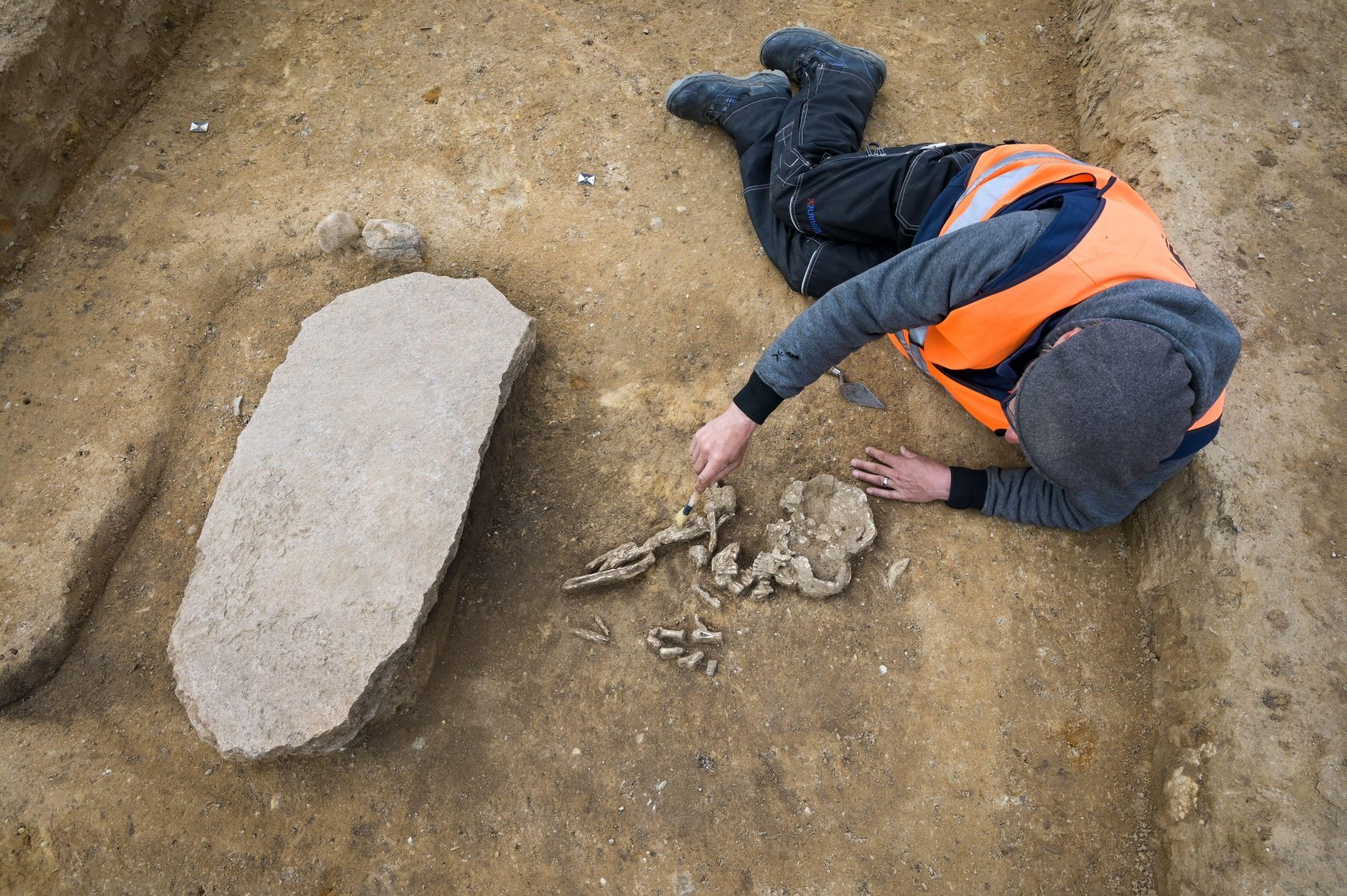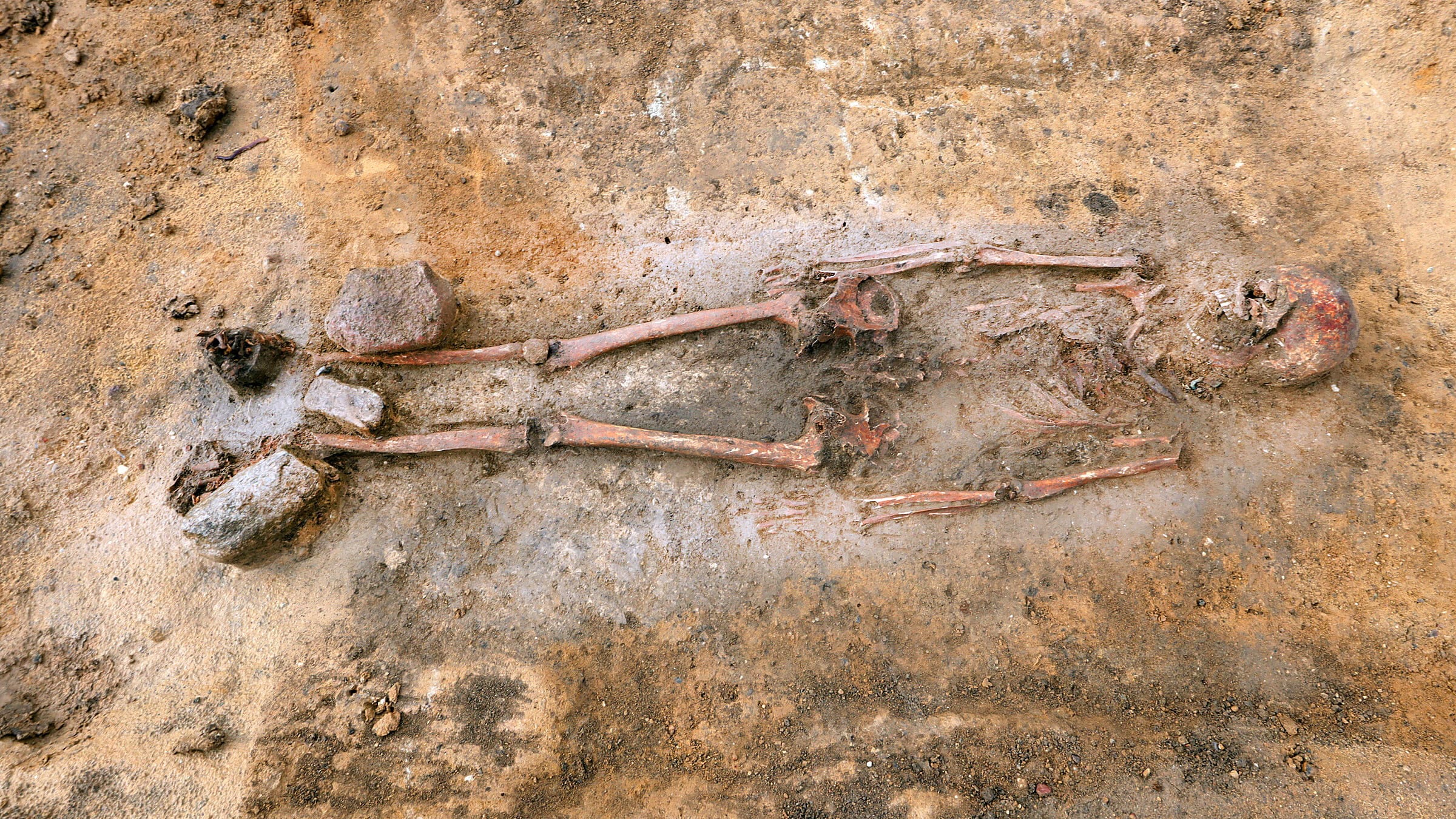In a fascinating archaeological find near Oppin in Saxony-Anhalt, a 4,200-year-old Neolithic “zombie grave” has been unearthed, revealing intriguing insights into ancient burial practices and superstitions. The grave, believed to belong to the Bell Beaker culture, contains the remains of an adult male who was deliberately pinned under a large stone, possibly to prevent him from rising from the dead and causing harm to the living. This discovery is the first of its kind from this period in central Germany, offering a rare glimpse into the fears and beliefs of our ancestors.
The Neolithic “Revenant Grave”

Archaeologists conducting excavations ahead of a power line expansion uncovered the grave of a male, estimated to be between 40 and 60 years old. Unlike typical burials of the era, this grave had no accompanying grave goods, and the deceased was positioned on his left side with his legs bent. A massive stone, measuring over three feet in length, a foot-and-a-half in width, and four inches in height, was placed across his lower legs. Weighing approximately 110 pounds, this stone was strategically positioned to ensure that the deceased remained in his grave.
Evidence of Ancient Superstitions

Susanne Friederich, the project manager and archaeologist, explained that this unusual burial reflects the Stone Age belief in “revenants,” or the undead. “We know that even in the Stone Age, people were afraid of unpleasant revenants. People wanted to prevent that with magic,” Friederich noted. In addition to this burial, other graves from the period have been found with similar precautions, such as corpses placed face down or pierced with a lance to keep them from rising. These practices demonstrate the deep-seated fear of the dead returning to haunt the living.
A Pattern of Deviant Burials

This recent discovery is not the first of its kind in the region. Last November, Friederich and her team uncovered another apparent revenant burial in the Oppin area, dating to the 2nd or 3rd century. In this case, three heavy stones were placed on the deceased’s legs, and a bronze fibula found in the grave indicated that the individual was of some status. Interestingly, a female skeleton was found nearby without any such anti-revenant measures, suggesting that these practices were selectively applied. The outline of a nearby house hints that the two individuals may have lived there, further deepening the mystery of their deaths.
Ongoing Excavations and Future Research

The skeletal remains from the Neolithic grave have been carefully recovered and sent to a laboratory in Halle for further study. The ongoing excavations along the power line expansion route cover more than 90 miles through Saxony-Anhalt, with a total of 335 miles planned. These excavations are expected to continue through 2025, potentially uncovering more graves and artifacts that could provide additional context to this unique find.
Conclusion
The discovery of the 4,200-year-old “zombie grave” in Saxony-Anhalt is a remarkable testament to the ancient beliefs and rituals of the Bell Beaker culture. The careful measures taken to prevent the deceased from rising from the dead offer a compelling glimpse into the fears that shaped the burial practices of the time. As excavations continue, further research may reveal more about the lives and deaths of these ancient peoples, shedding light on the cultural and spiritual landscape of Neolithic Europe.
